
From autonomous driving to smart cockpits, from operating systems to vehicle-cloud connectivity, more and more car manufacturers and technology companies are making intelligence the biggest selling point of new models. The automotive industry has fully entered the era of “software-defined vehicles.” Programming skills have become essential for those engaged in the installation and testing of smart connected vehicles. So, as a professional teacher in smart connected vehicles, how can one lead students to efficiently break through programming barriers?
To help schools address the pain points in teaching smart connected vehicles, Xingyun New Energy has partnered with leading companies in the industry such as Huawei, Intel, and Baidu, and combined with years of experience serving vocational colleges. Based on the talent cultivation needs of enterprise positions and students’ cognitive abilities, Arduino programming language has been chosen as the first foundational course for students majoring in smart connected vehicles, allowing them to master basic skills in programming and hardware control. Meanwhile, the accompanying textbook “Arduino Programming Control and Application” will soon be published by the Mechanical Industry Press.
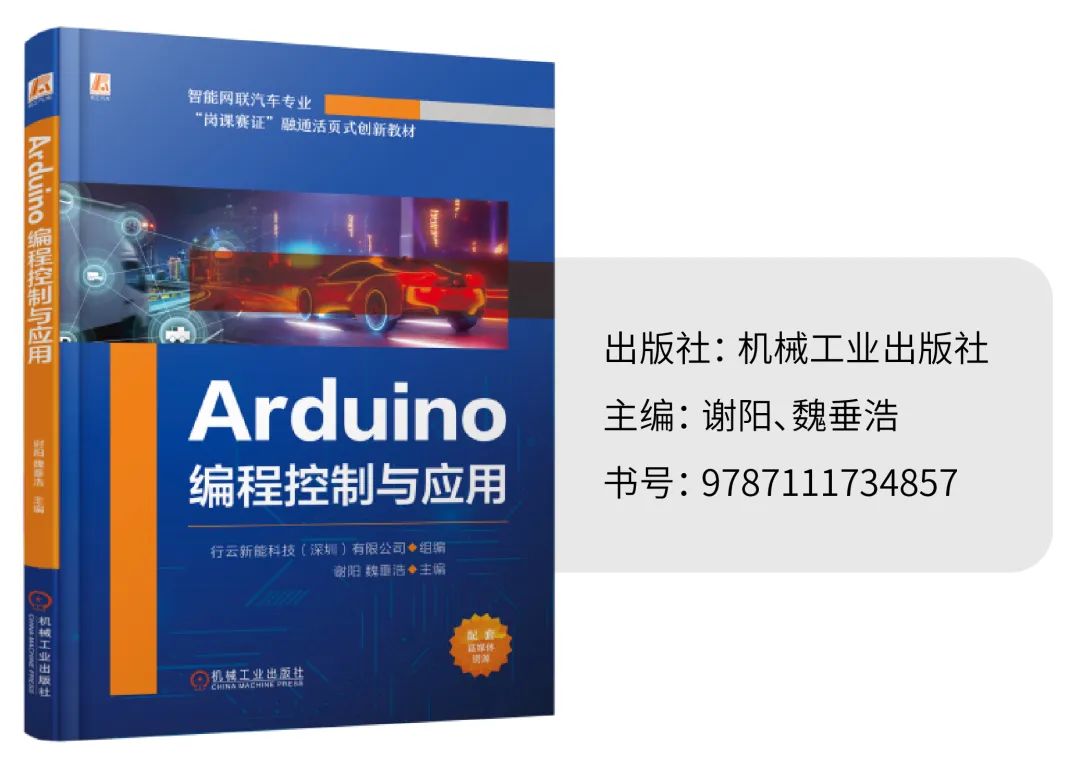
Note: The textbook is still in the printing stage. It can currently be queried through the authoritative publication data service platform in China (PDC) (https://pdc.capub.cn/). After registering and logging in, you can enter the book number to find the information about the book.
What content does this textbook cover?
This book is divided into five competency modules, covering the basic use of Arduino hardware and basic program control, as well as an introduction to graphical simple programming and textual simple programming. By studying this book, students can master basic skills in programming and hardware control, and train their comprehensive embedded application development capabilities, laying a foundation for more advanced programming learning and software debugging tasks. The recommended study time for this book is 64 hours, including 24 hours of theoretical study and 40 hours of practical training.
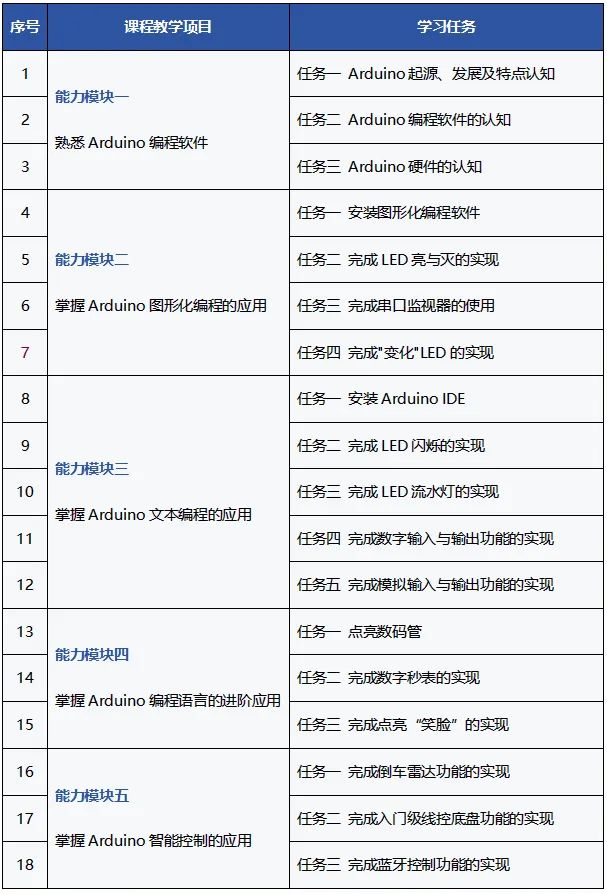
Why choose Arduino language as the first foundational course?
The Arduino language is widely chosen as an introductory language for embedded programming for several reasons:
1 Easy to learn: The Arduino language is based on C/C++, making it relatively easy to learn and get started for learners with basic programming knowledge.
2 Encapsulates various registers: The Arduino language encapsulates various registers, allowing learners to avoid deep understanding of the internal details of microcontrollers, thus reducing the learning difficulty.
3 Convenient interfaces and simple operation interface: Arduino provides convenient interfaces and a simple operation interface, enabling learners to focus more on programming itself rather than hardware configuration or interface design.
4 Supports graphical programming and textual programming: Arduino supports both graphical programming (similar to Scratch) and textual programming, providing multiple options for learners with different learning styles.
5 Powerful third-party function libraries: Arduino has a large developer community and rich third-party function libraries, offering learners more learning materials and example codes.
6 Relevance to the smart connected vehicle major: As an embedded programming language, Arduino is closely related to the basic requirements of multiple positions in the smart connected vehicle major, thus learning Arduino can lay a solid foundation for future learning and work.
What are the features of this textbook?
1 Training content closely aligned with job requirements
The learning points and skills in the textbook are derived from the demand for positions related to smart connected vehicles, such as embedded software development engineers for smart connected vehicles. This position typically requires designing, developing, and testing software that runs embedded in smart vehicle devices, including hardware resource optimization, low-level driver development, and testing and verification of embedded systems.
2. Supporting practical training equipment
Arduino control development kit
· Closely integrated with the automotive industry, the kit includes an Ackermann steering vehicle, which can be controlled for steering, acceleration, deceleration, and stopping through programming.
· Closely integrated with the smart cockpit industry, it includes Bluetooth modules, WiFi modules, voice modules, and LED modules, with programming functions based on these modules applicable to industry needs such as Bluetooth control, network connection, voice recognition interaction, and smart headlights.
· Closely integrated with the intelligent driving industry, programming skills for parking assistance systems can be trained using buzzer sensors, ultrasonic sensors, LCD displays, and the Ackermann steering vehicle, while programming skills for cruise control systems can be trained using motor drive expansion boards, OLED display expansion boards, Bluetooth control expansion boards, and the Ackermann steering vehicle.
3.Rich course resources
Course standard examples
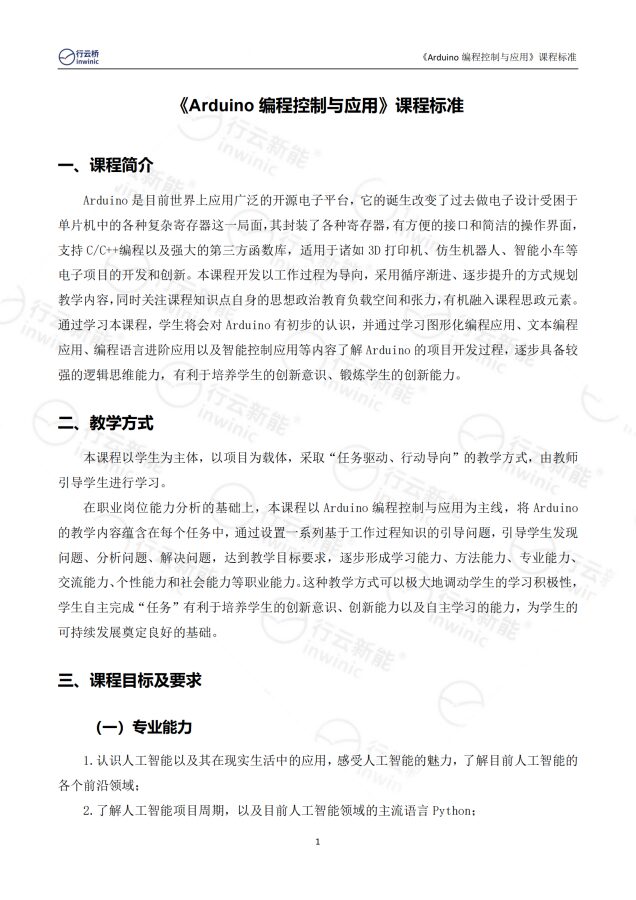
Teaching design
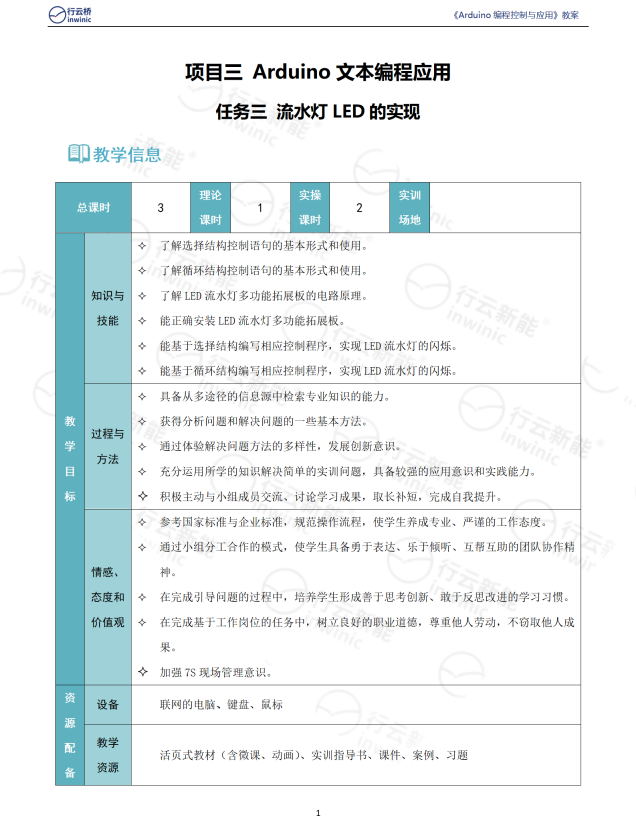
Courseware
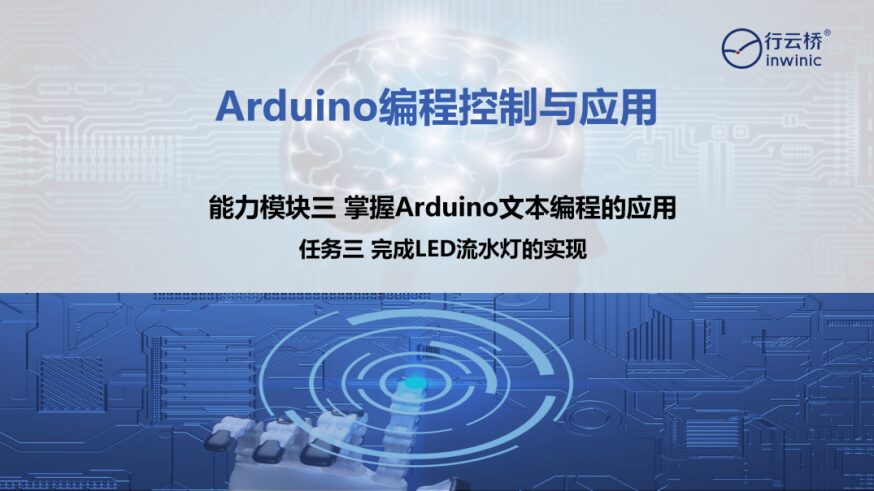
Practical training guidance
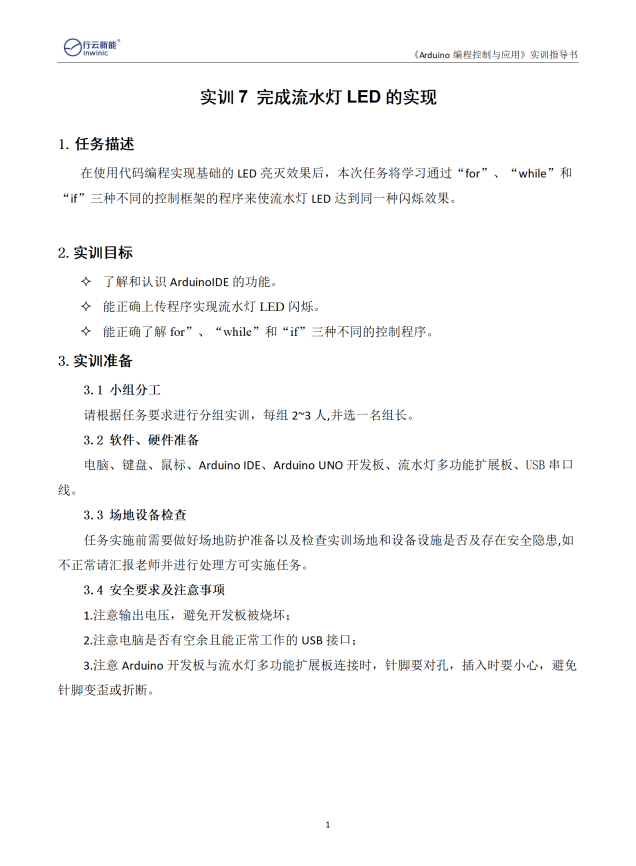
Animation
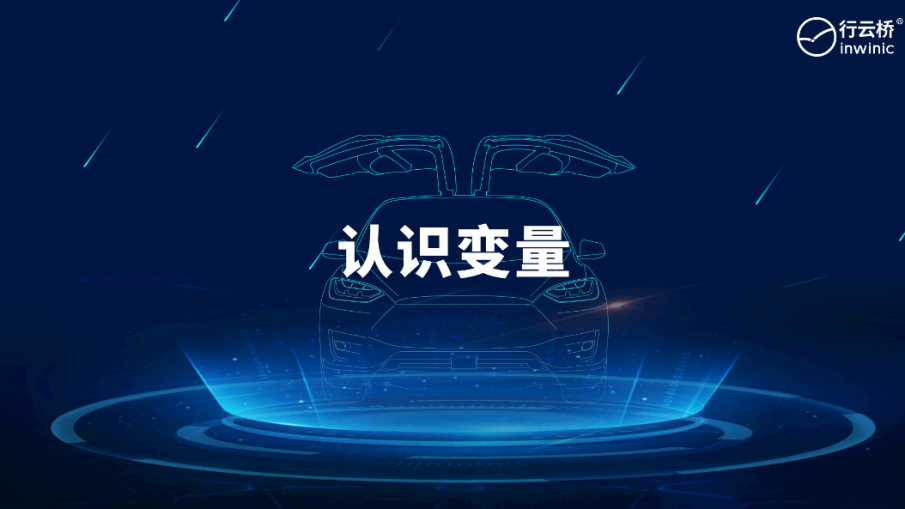
Micro-course
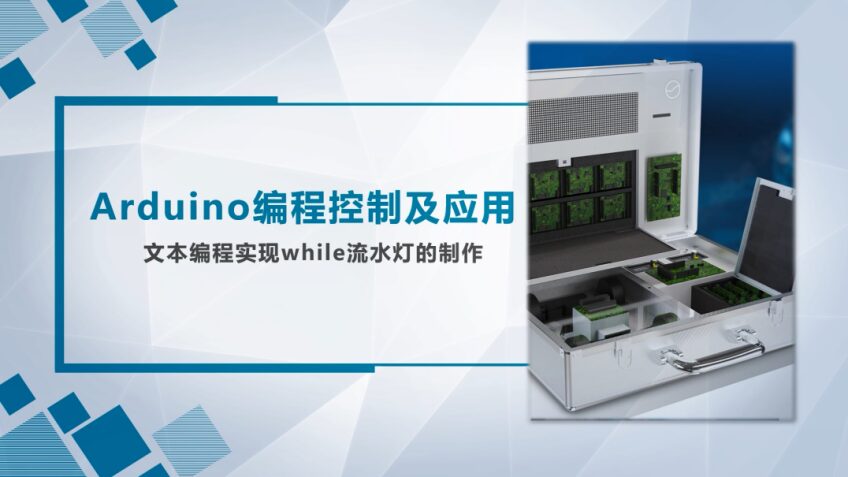
Exercises
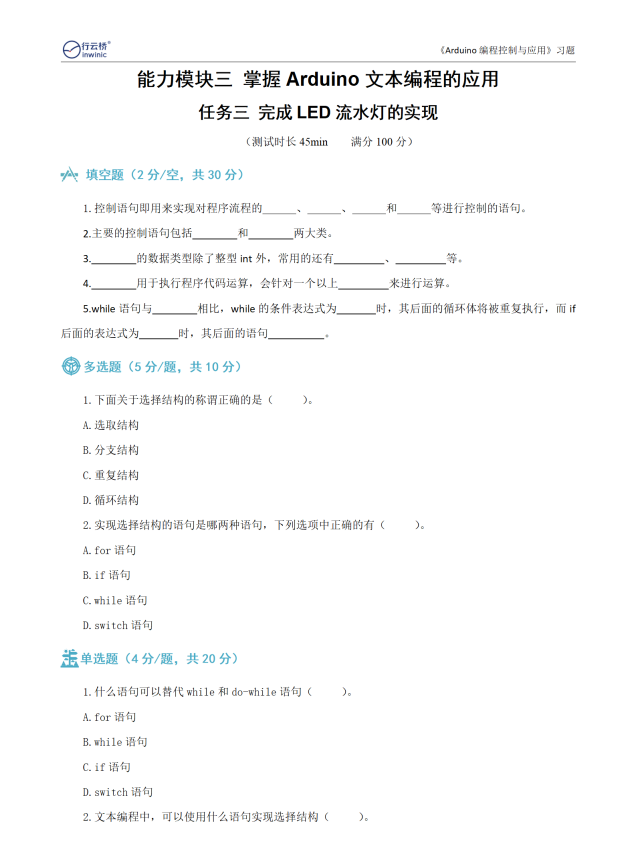
Author: Wang Zheng
Editor: Wang Zheng
Reviewer: Li Shuanglei


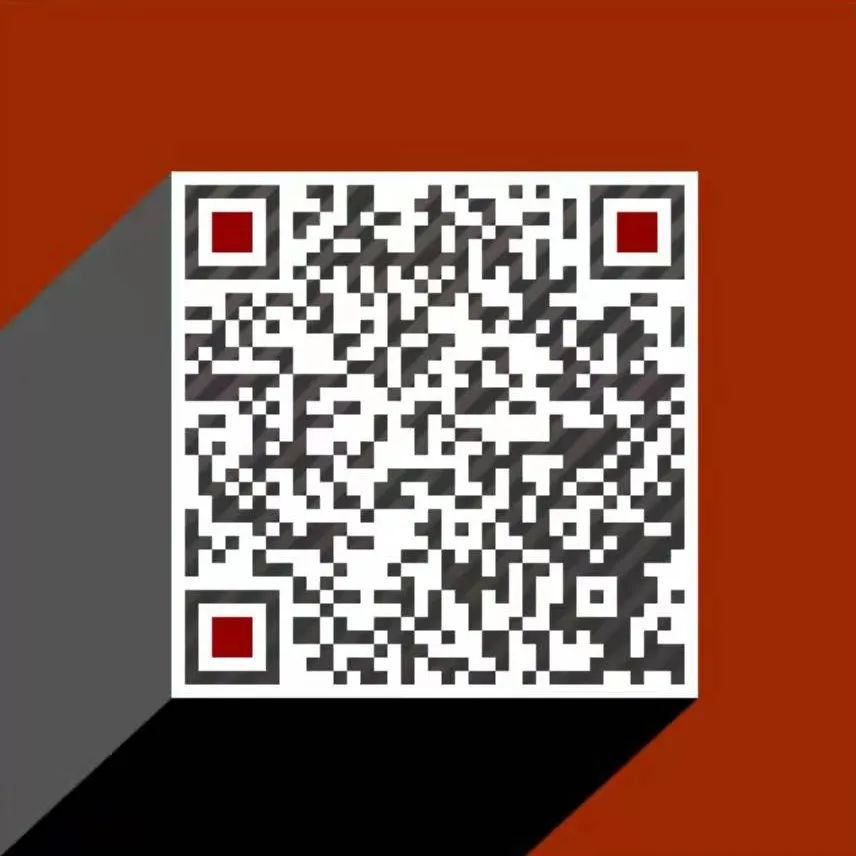
Previous articles